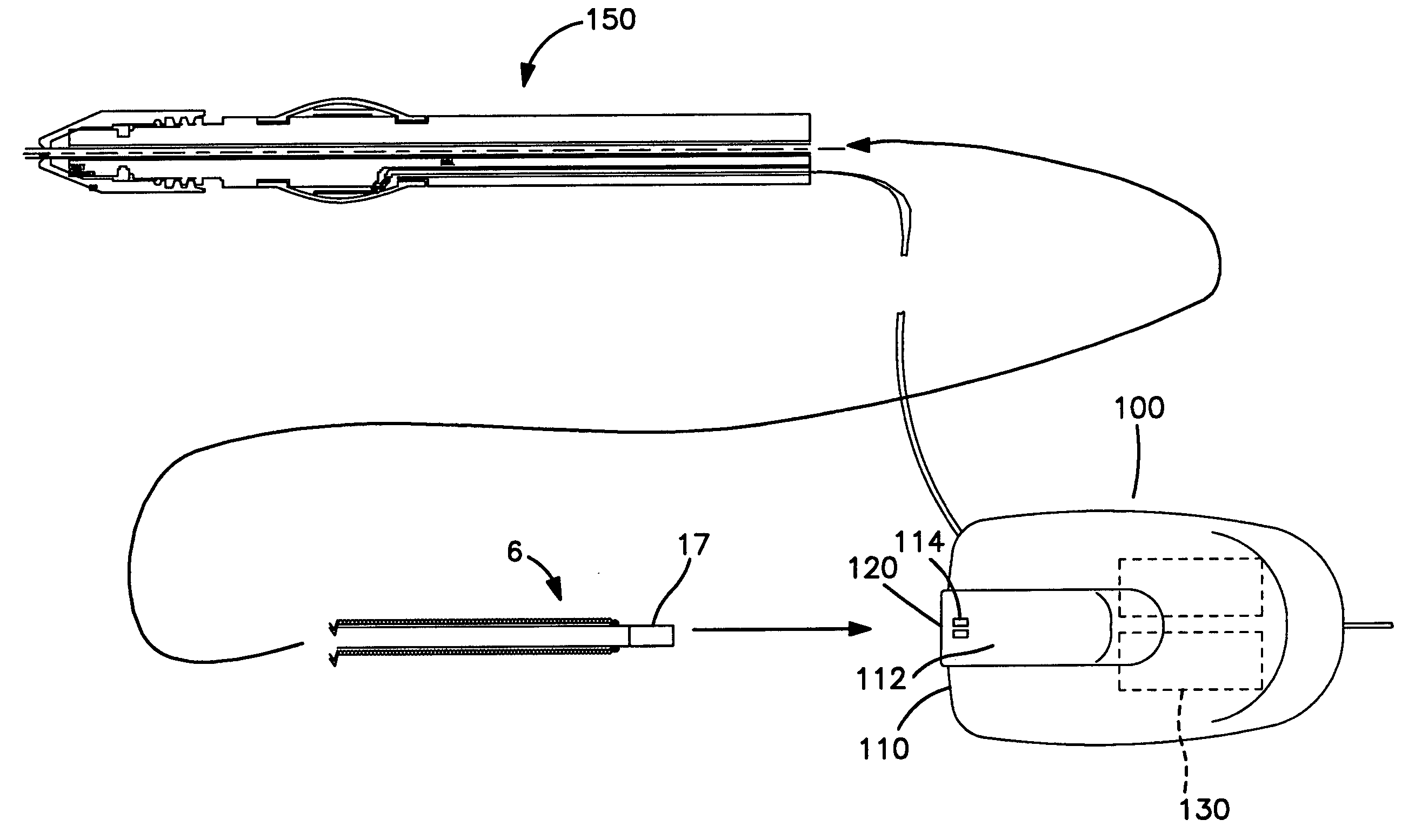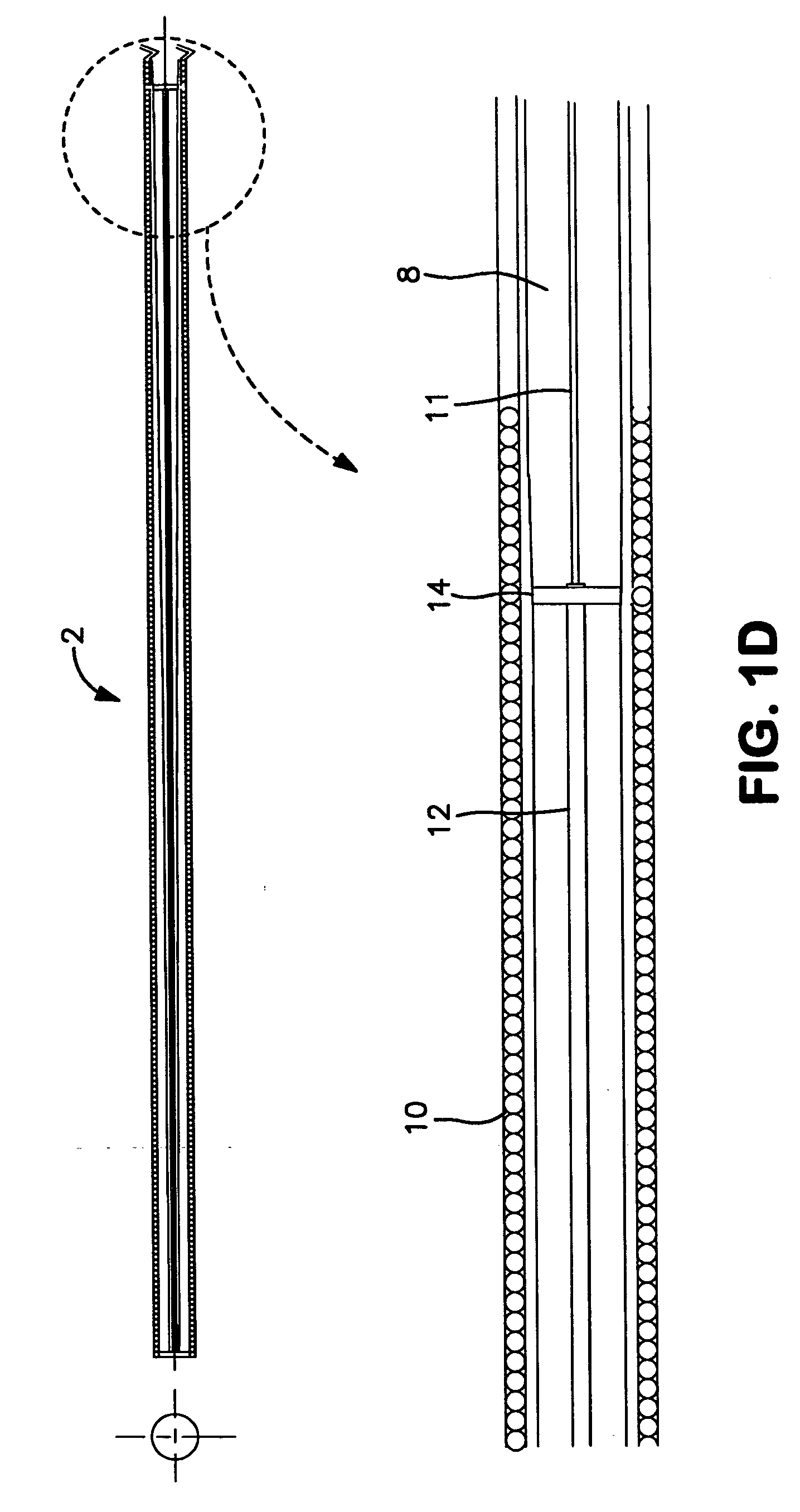Vascular guidewire system
a guidewire and vascular technology, applied in the field of medical devices, can solve the problems of affecting the caliber, flexibility, direction, and the development of disease within the vessel, and achieve the effects of low profile, convenient positioning, and saving time and other resources
- Summary
- Abstract
- Description
- Claims
- Application Information
AI Technical Summary
Benefits of technology
Problems solved by technology
Method used
Image
Examples
Embodiment Construction
[0043]FIGS. 1A-1F show various views of an embodiment of a guidewire 1 according to the present invention. Guidewire 1, shown fragmented in FIG. 1A to permit the entirety of the guidewire to be shown in one figure, comprises three main sections. Guidewire 1 includes an elongate, tubular structure, having a proximal end 6 (see FIG. 1F) which resides exterior to the body of a patient (or other passageway with which guidewire 1 is being used) and physically handled by a practitioner, and distal end, which in use will be within the passageway, having an actuator portion 2. The actuator portion 2 at a most distal portion of the guidewire 1 comprises a shape memory alloy (SMA) 12 or other suitable component adapted to introduce a deflection in a tip of guidewire 1, when activated. A third, central or mid-portion 4 of guidewire 1 is that section of the guidewire 1 between, and coupling, the distal and proximal portions and contains an inner, centrally disposed, electrically insulated, cond...
PUM
 Login to View More
Login to View More Abstract
Description
Claims
Application Information
 Login to View More
Login to View More - R&D
- Intellectual Property
- Life Sciences
- Materials
- Tech Scout
- Unparalleled Data Quality
- Higher Quality Content
- 60% Fewer Hallucinations
Browse by: Latest US Patents, China's latest patents, Technical Efficacy Thesaurus, Application Domain, Technology Topic, Popular Technical Reports.
© 2025 PatSnap. All rights reserved.Legal|Privacy policy|Modern Slavery Act Transparency Statement|Sitemap|About US| Contact US: help@patsnap.com



